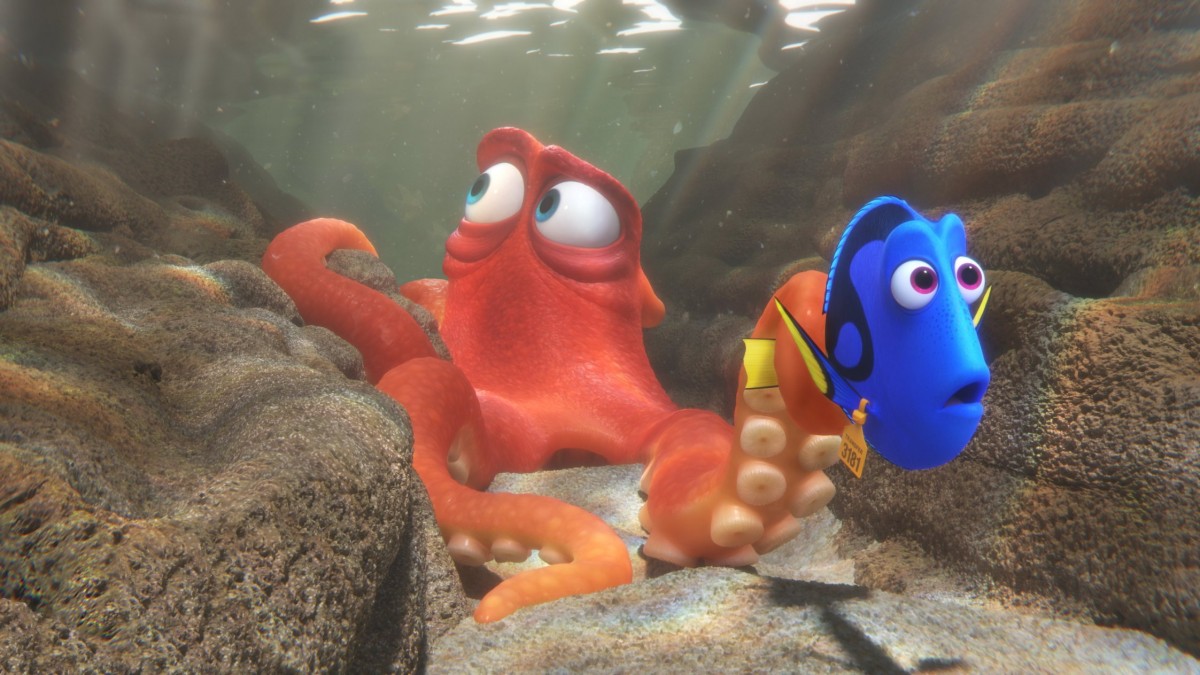
Making a sequel to Finding Nemo, arguably one of the greatest animated films ever made, was a dicey endeavor, particularly given Pixar’s track record with sequels. While Pixar has one of the better success rates as a studio, they’ve been hitting .500 with their sequels. The second two Toy Story films managed to cap off one of the most successful film trilogies of all time, both in terms of box office and quality, but Cars 2 and Monsters University were far cries from their predecessors. Neither Toy Story 2 or Toy Story 3 strayed too far from the formula that made the first one work so well. Familiar characters were kept in familiar settings, and were simply given new adventures to tackle, with resoundingly successful results. The same can’t be said for Cars 2 or Monsters University. Cars 2 major flaw was bringing Mater, who worked best as a secondary character, into the foreground (taking the action away from Radiator Springs and moving to a global scale didn’t help either). Monster University’s biggest issue lied in the choice to change the dynamic of Mike and Sully by placing the story prior to their friendship, which was the heart and soul of Monster’s Inc. Writer/director Andrew Stanton, who was also responsible for the Toy Story trilogy as, well as Monster’s Inc, and Finding Nemo (this guy can make a movie) skillfully avoids the trappings of the previous Pixar sequels, and gives us a delightful and entertaining follow up, tipping the sequel scales in the studio’s favor.
The film opens with brief flashbacks of Dory’s life, leading up to her literal run in with Marlin in Finding Nemo (which is a effective way of giving her role in the first film a bit more context) With the events of the first film now a year behind them, Marlin, Nemo, and Dory have settled into a comfortable life on the reef. That is, until, spotty memories of Dory’s life that she has tragically forgotten begin to come back to her, prompting a journey to find her parents. Marlin and Nemo, who know too well Dory’s short term memory issues, tag along for support. The film’s strength is in Dory herself. In Finding Nemo, Dory was already a slightly more complex character than we’re used to seeing in supporting roles, but Andrew Stanton, and Ellen Degeneres, give her some real dimension here. Dory’s desire to find her long forgotten parents doesn’t quite have same emotional gravity as a father desperately trying to find his young son, but her intentions are so pure and heartfelt, that we’re definitely invested as an audience. We’re also treated to a steady stream of laughs, with few laugh out loud moments. Again, not quite up to the level of Nemo, but funny none the less.
While the film is successful as a whole, it’s not without its flaws. Dory’s memory loss seems to manifest when the plot requires it to, which lessens the weight it has on the story. Not that I’m expecting a Memento level of commitment here, but a little more consistency would go a long way. And while Albert Brooks is always welcomed, Marlin and Nemo are reduced to secondary characters here, and are terribly under used. Despite having the titular challenge in the film, Marlin and Nemo carry the subplot of the film, with the focus on Dory and her journey to find her parents. Marlin and Nemo play off each other in a very effective Odd Couple type fashion (which we didn’t see much in the first film, as they shared very little screen time together), so it would have been nice to see a bit more of that play out. Marlin is also given the duty of reminding the audience of events from the first film, which occurs a bit more often than it should. A call back here and there would have been more than efficient, but there are a few too many “remember what happened last time?” references that just aren’t necessary.
I’ve mentioned my dislike for stunt casting in animated features in the past, but Pixar has historically done a better job of casting than other animation studios (I’m looking at you, Dreamworks). Finding Dory’s casting is a bit spottier than previous Pixar films, however. Brooks and Degeneres still shine in their roles, though the plot has them together only briefly. Ed O’Neil stands out as Hank the octopus, Dory’s reluctant sidekick in the film, and O’Neil’s Modern Family co-star Ty Burrell and It’s Always Sunny in Philadelphia’s Kaitlin Olson have nice turns as a beluga whale and a whale shark (respectively), but beyond that, there are no real stand outs. Eugene Levy isn’t given much to do, nor is Bill Hader, and Diane Keaton is Diane Keaton as per usual (seriously, when isn’t she playing Diane Keaton?). Idris Elba and Dominic West as sea lions provide the film with a few of its funnier moments, but are used sparingly.
While not on the level of Finding Nemo, Finding Dory is an enjoyable follow up, with just enough laughs and heart to make it worth your while. I like to gauge a film on whether or not I’d like to spend more time with the characters, and after Finding Dory, I’d gladly see a third film in the Nemo franchise.

